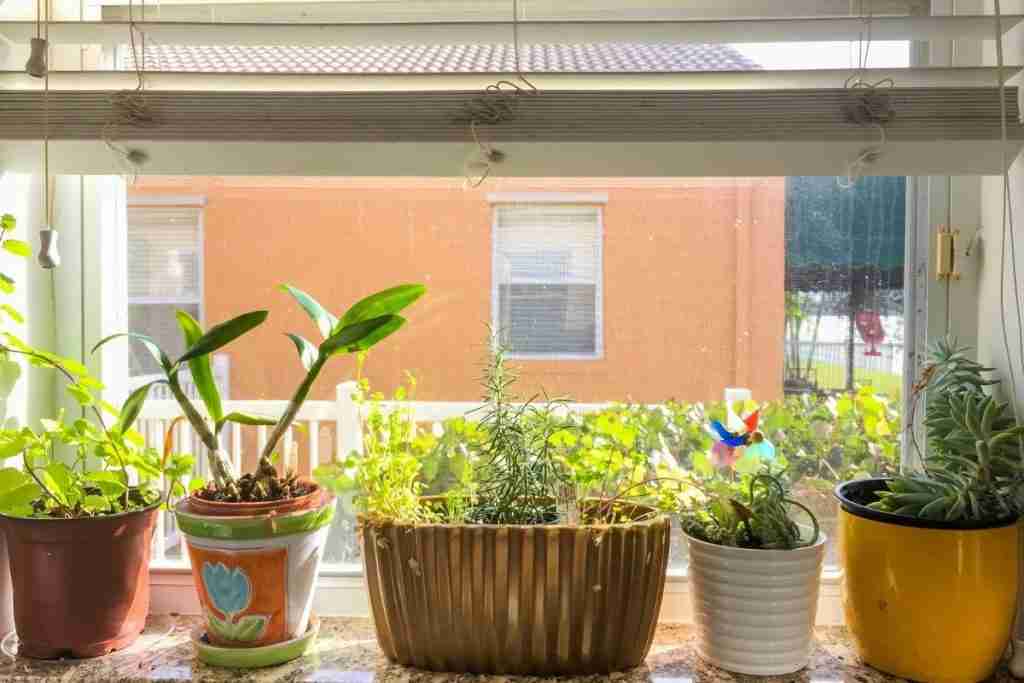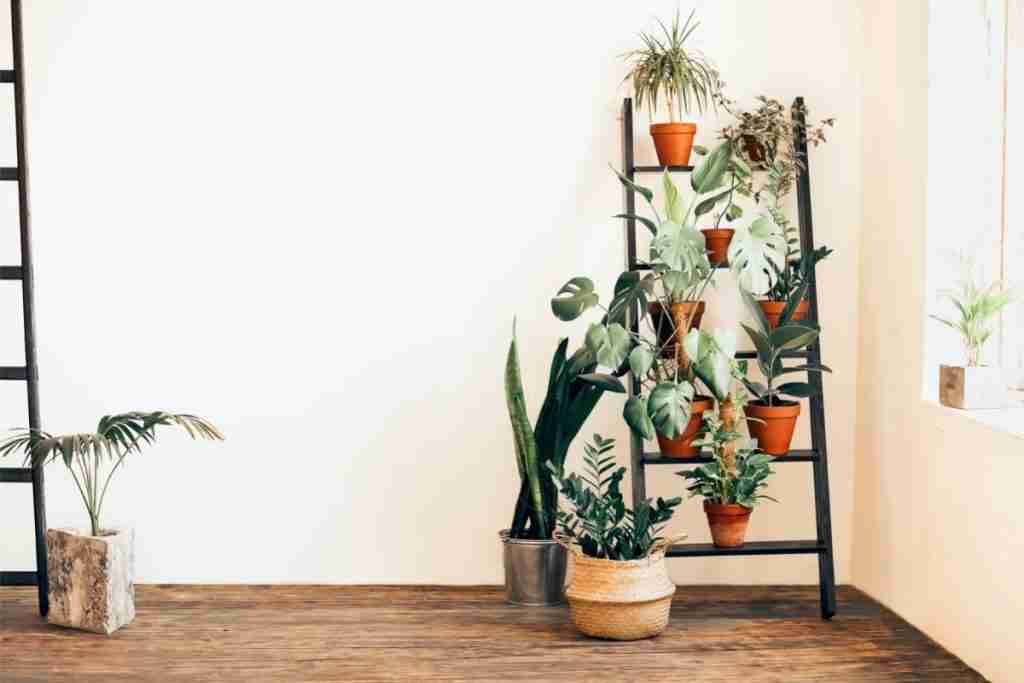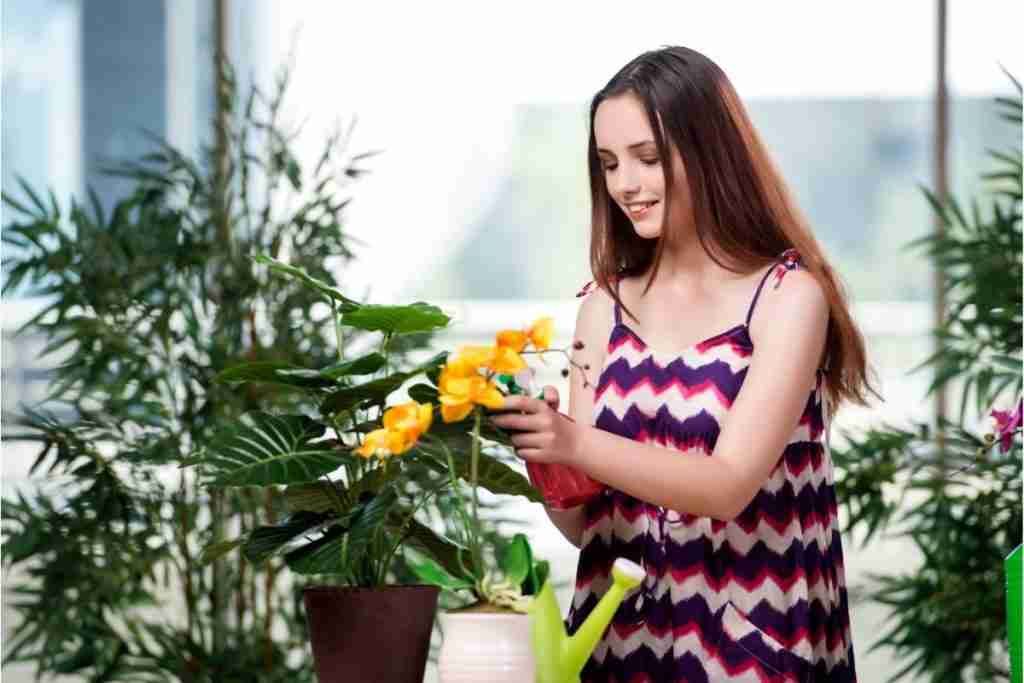
You don’t have to have a green thumb to design a beautiful, lush indoor apartment garden. Whether you have an entire room to dedicate to the cause or just a small corner, all you need is a great plan and a little guidance for successful apartment gardening.
However, indoor gardening doesn’t have to be done alone. In this article, we’ll provide an excellent guide – as well as some great indoor gardening ideas – for beginners who want an indoor garden but are not entirely sure how to go about it.
Table of Contents
8 Great Indoor Apartment Garden Designs for Beginners
If your apartment is in desperate need of a little nature, adding an indoor garden is the perfect solution. Luckily, there are so many options out there that you can create a successful apartment garden no matter what types of plants you prefer.
Below is a list of eight fantastic ways to spruce up your small space and create a garden that will bring your apartment to life. Whether you want some delicious veggies, fresh herbs, or vibrant flowers, the apartment gardening ideas below can accommodate whatever you have in mind.
1. A Garden Wall

Garden walls can be a great way to add some greenery to your space while spicing up a boring wall, separating two rooms, or breaking up a large one.
There are a few different ways to create garden walls to give you the look you want, no matter how much room you have to spare.
You can use a thin wooden shelf to create a barrier between two rooms and load those shelves with your favorite flowers, vegetables, herbs, or other plant varieties. You could also purchase wall garden planters with pockets for different flowers, giving you an entire wall of green.
2. Hanging Gardens
You don’t need a ton of space to add a garden to your apartment. You just need to utilize space that would otherwise go untouched.
Purchase plant-hanging hooks and pots from your local department store or lawn and garden shop and use them to make a vertical garden to spice up any room.
3. Window Garden
Since plants require plenty of natural sunlight to survive, consider creating a window garden where the plants you choose have plenty of access to sunlight.
Many people utilize kitchen window space to grow indoor herb gardens. This is a great way to get convenient and fresh spices to improve the taste of all of your culinary creations.
4. Garden Ladder

You can design a fabulous apartment garden indoors or on the patio with an old wooden ladder. You can also use a metal one, but it may not give the same rustic appearance as wooden styles.
You can decorate the ladder however you want to make it fit in with the rest of your decor. Paint it vibrant colors and add a bunch of terracotta pots with tons of different succulents to create a bold design. Or stain the ladder a natural wood color and hang unified planter pots along the rungs to give a more traditional and modern appearance.
5. Dedicated Garden Room
Do you happen to have an extra room or large closet that doesn’t typically get much use? Great! Fill that space up with plants that thrive in darker locations and don’t necessarily need tons of maintenance.
The peace lily, ZZ plant, and spider plant are all good options for closet gardens, or anywhere else that doesn’t provide much light.
6. Complete Bookshelf Garden
Are you a DIY enthusiast? If so, build yourself a wooden bookshelf or purchase one second-hand and use it in a room that sees a lot of sun during the day.
This would make for an excellent indoor veggie garden for your growing plants or a great place for an amazing succulent collection.
7. Rolling Tea Cart Garden

Old fashion furniture can provide a rustic and historical look to your room as well as provide a place for you to have a mini-indoor apartment garden.
Place some of your favorite seasonal flowers in uniquely designed pots and set them on a rolling table for a look that will brighten up a room.
Antique tea carts are the perfect option for this type of layout. There are different varieties to choose from, and they come in many different shapes and sizes.
8. Mini Mason Jar Garden
We truly love the versatility and flexibility of mason jars. These items are ideal for endless DIY crafts and creations and can be extremely useful for anyone trying to put together a small indoor garden inside their apartment space.
One of the best ways to set up a mason jar garden is by placing them on windowsills or bookshelves and using chalkboard paint to make labeling each plant quick and easy.
Tips for Designing an Indoor Apartment Garden
Adding a garden to an apartment doesn’t require a ton of specialized skills or a keen eye for all things green; it just takes a little time and effort and a lot of creativity.
1. Evaluate Your Space
Before choosing a garden design, take some time to evaluate the space you have to dedicate to the cause.
Even if you have your heart set on one option, it might not be plausible in your available area, so you have to be prepared to decide on another idea.
If you are going to put an apartment garden in an area where there is already little room to spare, you shouldn’t clutter the spot more with extra obstacles like plant stands and ladders; smaller places are ideal for walls or vertical gardens.
If you plan on adding a garden to the corner of the room, consider large pots and tall plants to give the space a more profound look.
Another detail that shouldn’t be forgotten is window accessibility. Can you provide enough natural lighting to an indoor garden, or will you have to consider investing in artificial lighting options?
Lastly, think about the area surrounding the location where you plan on putting a garden. Are the floors carpeted or hardwood? Is the location accessible to animals and children? Does the room run air conditioning during hot summers or heaters during the wintertime?
All of the details above can make a huge difference in how well your indoor garden will thrive and what kinds of plants have the best chance of growing.
2. Pick a Design
Now that you have chosen the ideal location for your indoor garden, it is time to pick the best design to highlight your room and give your apartment a look to match your personality and style.
You can pick a design option from one of the ideas listed above or come up with a creation of your own that will fit into your current decor and theme.
3. Choose the Right Plants For Your Space

There are numerous plant options for all types of spaces, whether you need something that requires minimal space to grow or plants that don’t need much water or sun. As long as you know what plants are best for your garden, creating an indoor apartment garden isn’t difficult at all.

- Hydroponic Gardens – Hydroponic gardens are a great way to grow indoor gardens without taking up a ton of space. These options require no potting soil or dirt and grow with the aid and nutrients from light and water. The best part is they also make it possible to grow almost any type of plant you want.
- Herb Gardens – Herbs are commonly grown indoors and are pretty hardy, requiring little maintenance. They also thrive well in small pots and don’t take up much space at all.
- Succulent Garden – Succulents are another popular option for growing indoor gardens because they’re low-maintenance and have an ability to thrive in dry, warm spaces without needing much light.
- Vegetable Gardens –While vegetables typically thrive much better outdoors, that doesn’t mean you can’t grow them inside with the right conditions and maintenance. If you have space that provides plenty of sunlight, you can easily grow crops such as peppers, carrots, spinach, kale, potatoes, tomatoes, and radishes.
- Low-light Gardens -If you are looking for plants that can live in spaces without much lighting or water for long periods of time, you should consider Ponytail Palm, snake plant, Chinese evergreen, or indoor peace lilies.
- Colorful Gardens – If you want some plants full of color to make your indoor garden pop, consider purchasing Pink Polka Dot Plants, Coleus, Desert Gems Cacti, or Bromeliads.
These are only a few of the popular options available for those residing in apartments. You could consider growing fruit, eccentric plants, or even creating a Japanese garden.
4. Understand the Requirements for Growing an Indoor Garden
For an indoor apartment garden to grow hardy and healthy plants successfully, you have to keep in mind that they still require the same essentials and proper maintenance as outdoor plants. It is important to provide these things, whether in natural or artificial form.
- Lighting – Sunlight is a huge part of growing healthy plants at all stages. Without proper lighting, your plant will lose its vibrant colors and energy to grow and will eventually die. If you do not have the space or ability to place your indoor plants near a window or glass door, you will need to purchase a grow light to provide artificial rays to aid in your plant’s growth.
- Water – While plenty of plants out there don’t require frequent watering, all plants need hydration at one point or another, so maintaining a watering schedule and sticking to a routine is essential for indoor gardens. To ensure your plants get the water they require on time, consider ordering a self-watering system with a timer.
- Drainage – Indoor plants are highly susceptible to fungal diseases such as root rot. The reason this illness is so prevalent in apartment gardens is due to the lack of room and drainage in your pots. When water pools at the bottom of a container, the roots will literally drown and die, eventually developing bacteria and mold that will travel up and kill your plants. Ensure your indoor plants have a good soil mixture that provides plenty of aeration and be sure your pots have holes, making it easy to release excess water.
- Vigilance – Indoor plants have just as much chance of surviving as outdoor ones, but they need a little extra TLC. Keep an eye on your garden and make sure it isn’t frequently touched, being chewed on by pets, or infested with insects.
Summing Things Up
There are so many advantages to having a garden, whether that garden is indoors or outside. As long as you are prepared and informed, you can have a lush, green, and healthy garden growing inside your apartment all year round.
